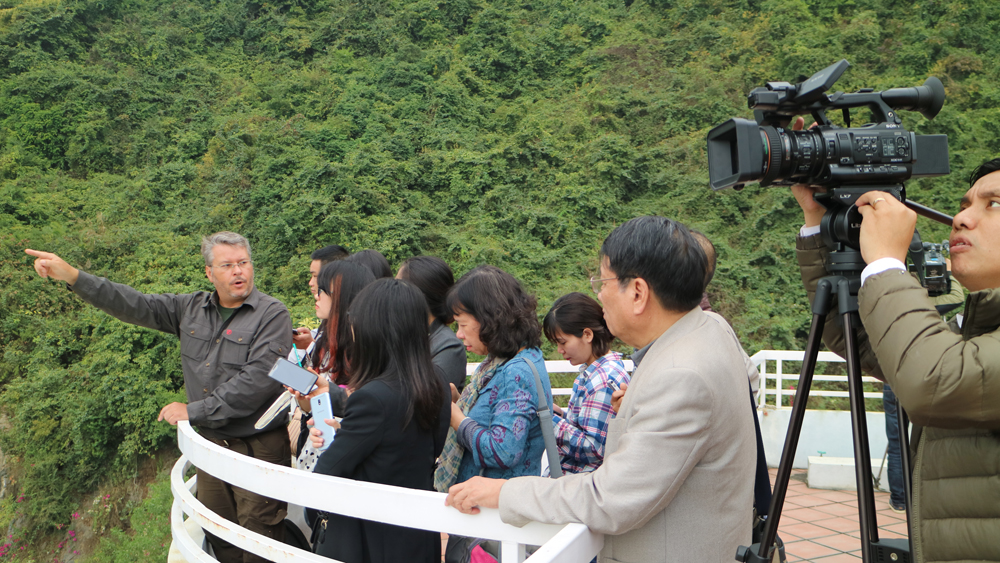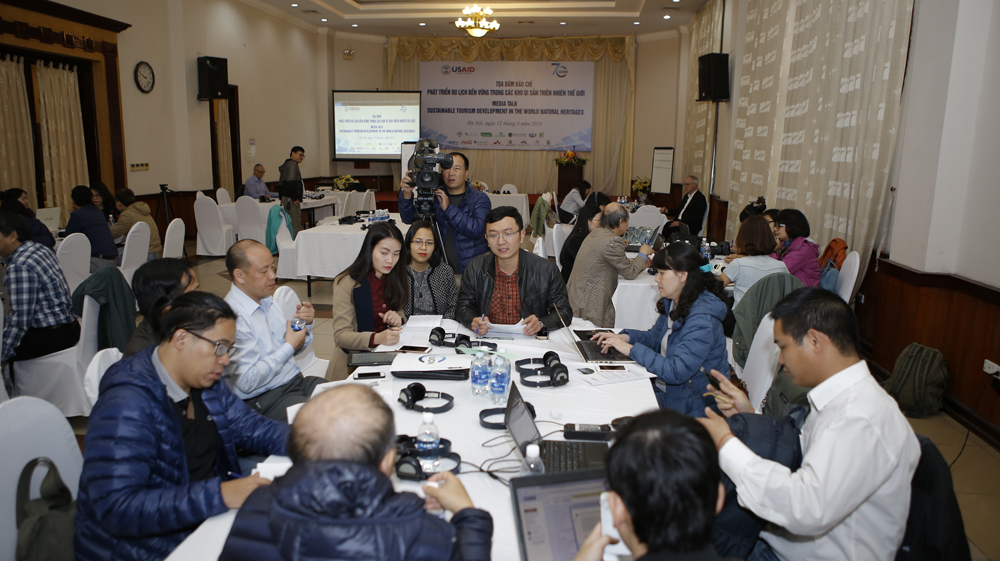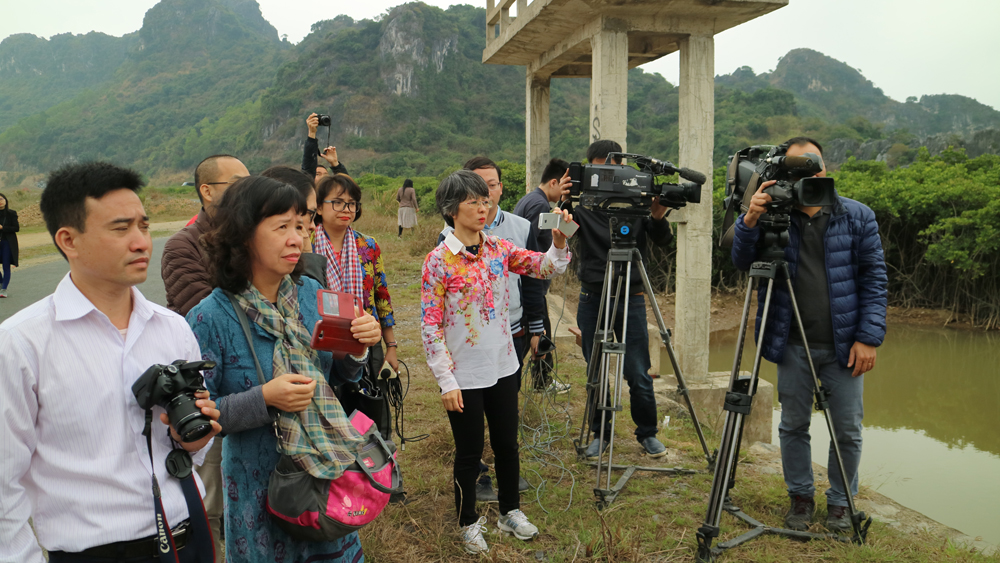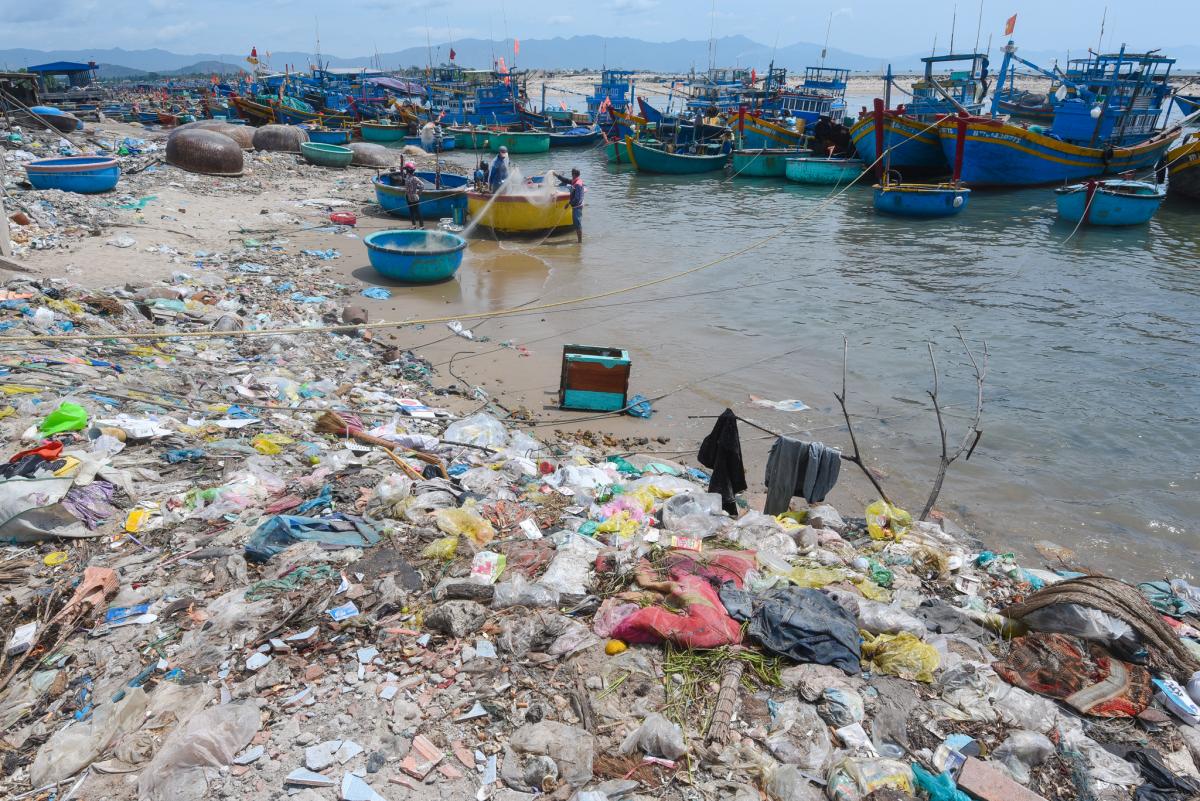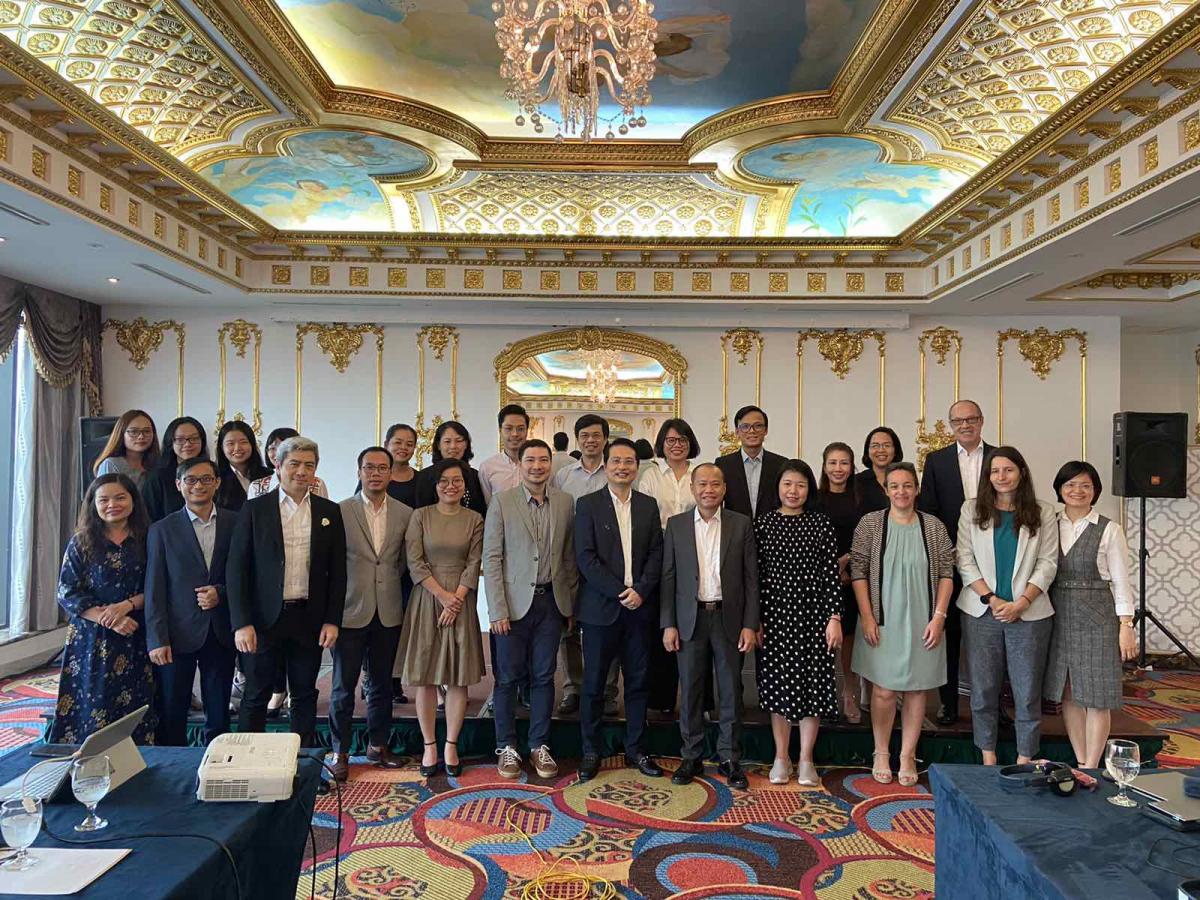Media trip focuses on tourism development on Cat Ba Island
Cat Ba is the largest of the 367 islands that make up the Cat Ba Archipelago, home of the Critically Endangered Cat Ba langur. Located near Hai Phong, Cat Ba is a national park as well as an internationally recognized UNESCO MAB Biosphere Reserve.
In 2017, Cat Ba welcomed 1.7 million tourists and according to the new tourism development plan, it is aiming for 5 million tourists by 2020 and 10 million by 2030.
To manage this huge projected increase requires a major expansion of infrastructure, including hotels, resorts, casinos, marinas, golf courses and a cable car. Many development projects are currently underway in both the buffer zone and core zone of the national park.
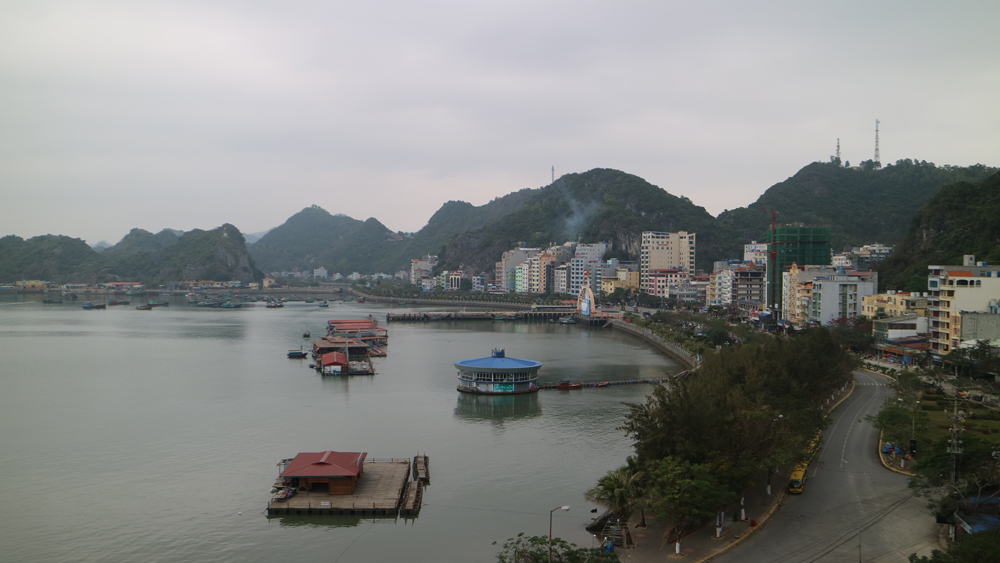 Photo: Gia Luan port in Cat Ba Island will be turned into a combination of shops and resorts © IUCN Viet Nam
Photo: Gia Luan port in Cat Ba Island will be turned into a combination of shops and resorts © IUCN Viet Nam
Before it is too late, policy makers need to understand that the reasons that tourists visit Cat Ba is because of the natural beauty and not risk defacing the island through mass tourism and poor planning.
In order to attract public attention to tourism development in both the Ha Long World Heritage Site and Cat Ba, IUCN organised a media talk and press trip on March 12-14 on the topic of sustainable tourism development in natural World Heritage Sites.The 3-day event attracted 30 journalists, provincial government officials, scientists, architects and business people. The event was a mixture of talks, meetings and site visit. The field trip to Cat Ba was conducted in collaboration with the Cat Ba Langur Conservation Project.
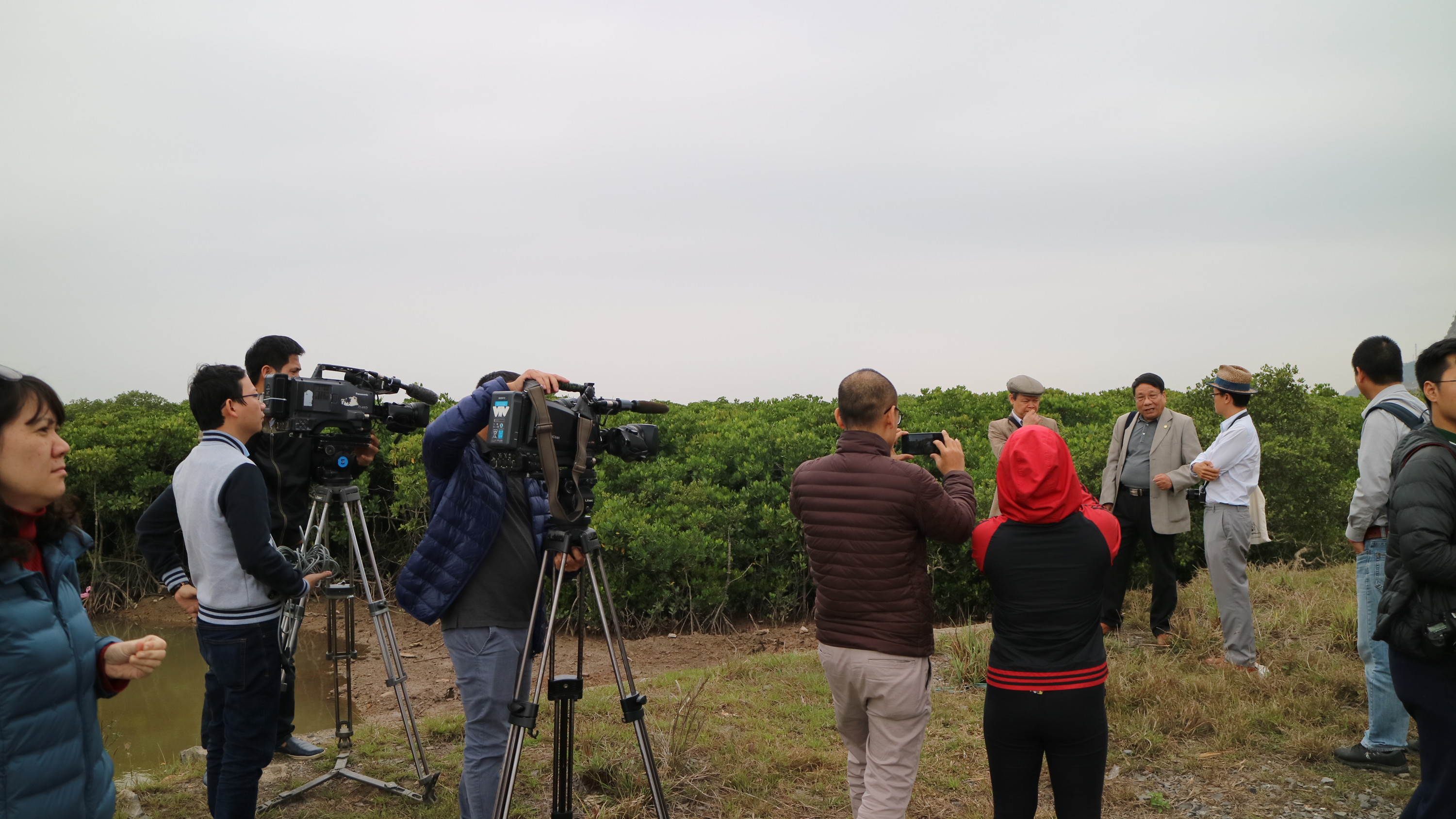 Photo: Journalists interviewing specialists besides the mangroves in Xuan Dam, Cat Ba Island © IUCN Viet Nam
Photo: Journalists interviewing specialists besides the mangroves in Xuan Dam, Cat Ba Island © IUCN Viet Nam
An on-line rapid assessment before the event revealed four major interested topics of journalists in which two issues of tourism development planning and waste water treatment in Ha Long – Cat Ba are of highest concern.
The clear message to the media was that development will and should continue and that conservation is not counter to development. The question is how to combine development and conservation in an optimal manner. According to the 2017 Global Travel and Tourism Competitiveness Report, the main tourism driver of Viet Nam is its natural resources (ranked 34th), cultural resources (ranked 40th) and price competitiveness (ranked 35th). So to enhance its tourism competitiveness, Viet Nam should focus on environmental quality, which is currently ranked very low at the 129th.
During the field trip on Cat Ba, the journalists saw with their own eyes the island’s high biodiversity and environmental values, which would be gravely damaged by proposed tourism projects. The developers are not insensitive to these risks. The cable car, which was originally planned with pylons inside the national park, will now be built outside. Journalists also saw how Gia Luan Bay has been replaced with resorts and shops and the construction of a golf course on Xuan Dam’s productive intertidal mudflats that are very important for migratory birds.
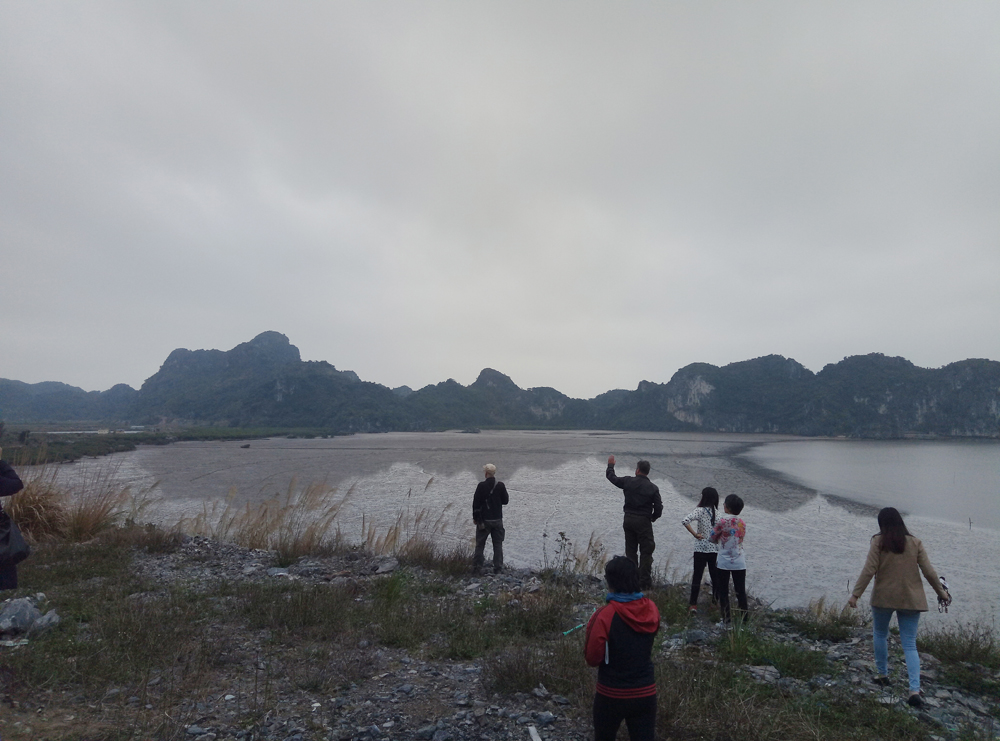 Photo: Overview of Xuan Dam area in Cat Ba Island, which will soon be replaced by a golf course © IUCN Viet Nam
Photo: Overview of Xuan Dam area in Cat Ba Island, which will soon be replaced by a golf course © IUCN Viet Nam
Based on the evaluation report, 63% of the journalists rated the trip as “good” and 37% as “very good”. All said that the trip met their expectation. Viet Nam News’ Mai Khuyen, said: “It was really an unforgettable experience. The press briefing on March 12 was very useful as it gave me the chance to meet with IUCN experts, national specialists and colleagues from other news agencies. I have also collected extremely useful documents at the Leadership Committee meeting on March 13th so I can immediately write stories, both print and online, and maybe two more articles for the future. Talking with local and international experts enriched my understanding on the need to preserve the heritage sites. Such talks have strengthened my pledge to writing more about natural and environmental protection.”
The recap session after the field trip also identified 15 issues could be turned into news stories. A series of post-trip articles have been produced and shared on Facebook. Journalists seem to be competing with other as each journalist has written as least two articles. One journalist said that she felt embarrassed to have only completed one article. Some journalists even decided to return to Cat Ba to do more research.
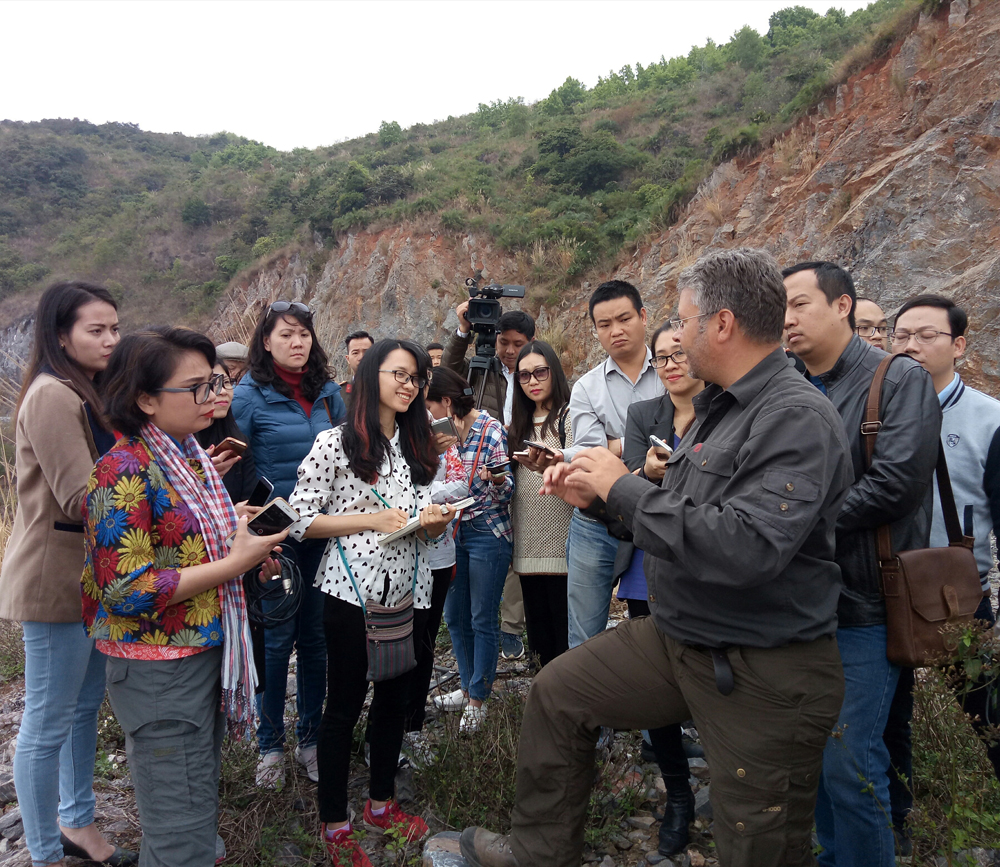 Photo: Journalists discussing with Mr. Neahga Leonard, Director of CBLCP about development projects on Cat Ba island © IUCN Viet Nam
Photo: Journalists discussing with Mr. Neahga Leonard, Director of CBLCP about development projects on Cat Ba island © IUCN Viet Nam
We also received some recommendations on how to improve these media trips. Tuoi Tre’s Nguyen Hieu said: “Media trips are necessary and important for journalists. The 3-day event organised by IUCN has provided me with overall picture of the development in Ha Long and Cat Ba. However, the field trip is short and does not have much flexibility for journalists to investigate by themselves as well as to interview the locals. After the trip, I have produced one news story in the print newspaper, two online features and one video feature. I will come back to Cat Ba Island to continue writing.”
This activity was organised in the framework of the Ha Long-Cat Ba Alliance project with the financial support of the U.S. Agency for International Development (USAID) for 2014-2019
